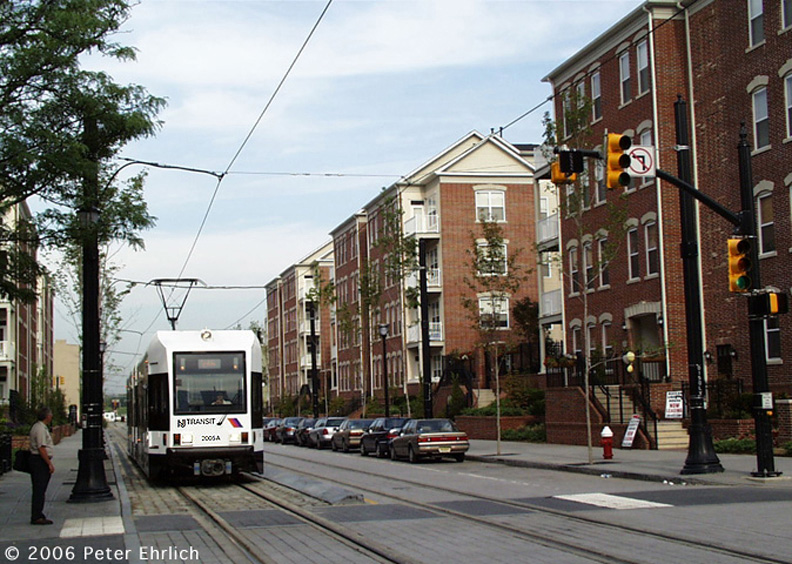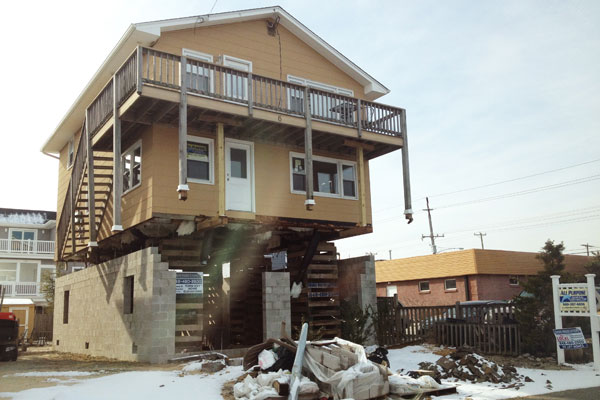New Jersey Future Blog
Agreement on Waterfront Plan Buoys Redevelopment in Trenton
February 18th, 2009 by Chris Sturm
- Early this month, the City of Trenton and the Capital City Redevelopment Corporation (CCRC) signed a memorandum of understanding with 10 county, state and regional agencies to proceed with the Trenton Waterfront Area Revitalization Initiative.
- The city and CCRC propose to redevelop a 32-acre site behind the State House complex, converting surface parking lots into a mixed-use neighborhood and park, and turning Route 29 from a limited-access highway into an “urban boulevard” complemented by a pedestrian-friendly street network.
- The project, when completed, would put an estimated 90 percent of the area back on the city’s tax rolls.
Plans Come Together; Next Step is Funding
The Trenton Waterfront was once a thriving center of commerce, industry and recreation. Busy textile factories lined the banks of the Delaware River; nearby restaurants, stores and homes fed, clothed and housed workers; the city’s signature green space, Stacy Park, linked the historic State House to the lively riverside.
After World War II, however, the area fell on hard times. The factories and stores closed; the buildings were demolished and replaced by parking lots; Stacy Park was eviscerated when the narrow John Fitch Way was converted into four-lane, high-speed Route 29.
In 1989, the CCRC unveiled the Capital City Renaissance Plan, which re-envisioned the area between the State House and the river as a mixed-use waterfront neighborhood. Over the next 20 years, other agencies studied the area and came up with their own complementary plans. The U.S. Army Corps of Engineers devised a plan to restore the nearby Assunpink Creek; the state Department of Environmental Protection prepared a Capital Park Master Plan for a new green space between the State House and the river; the City of Trenton approved its own Downtown Master Plan; and the state Department of Transportation added to its inventory of integrated land-use and transportation projects (but not to its list of funded projects) the conversion of a 1.8-mile stretch of Route 29 into a boulevard.
All of these plans came together with the signing of the memorandum of understanding on February 9. In addition to the City of Trenton and CCRC, other signatories to the MOU were the state departments of Transportation, Environmental Protection, Treasury and Community Affairs; the New Jersey Economic Development Authority; the New Jersey Housing and Mortgage Finance Agency; NJ TRANSIT; Mercer County; the Delaware River Joint Toll Bridge Commission; and the Delaware Valley Regional Planning Commission.
The MOU commits these agencies to work together toward the creation of “a new energized waterfront that will unify diverse waterfront areas of the City into a cohesive and attractive mixture of recreational, residential and commercial uses by capitalizing on one of the City’s greatest natural assets, the Delaware River.”
The next step is to find funding. Trenton Mayor Doug Palmer has put $125 million for the Route 29 roadwork and surrounding development on the city’s wish-list for the federal stimulus package, noting that the first phase of the project will be “shovel-ready” within nine months.
This is precisely the kind of public investment that can transform an underutilized and unsightly parcel of property (a surface parking lot) into an attractive, dynamic, mixed-use project that generates private enterprise and produces much-needed tax revenue for the community. Creating a livable, walkable neighborhood in the shadow of the State House dome has the added benefit of reducing residents’ dependence on the automobile, helping New Jersey meet its ambitious greenhouse gas reduction goals.
Trenton’s waterfront project is but one of several examples of government and the private sector working together to pave the way toward a prosperous, sustainable future through redevelopment. On February 27, New Jersey Future’s fourth annual Redevelopment Forum will bring together public officials, citizen activists and leading professionals in law and planning to examine the keys to success in achieving these kinds of innovative, high-quality, community-based redevelopment projects.
If you have any questions about this issue of Future Facts, please contact Chris Sturm, Senior Director of State Policy, or Rick Sinding, Senior Communications Director.
















